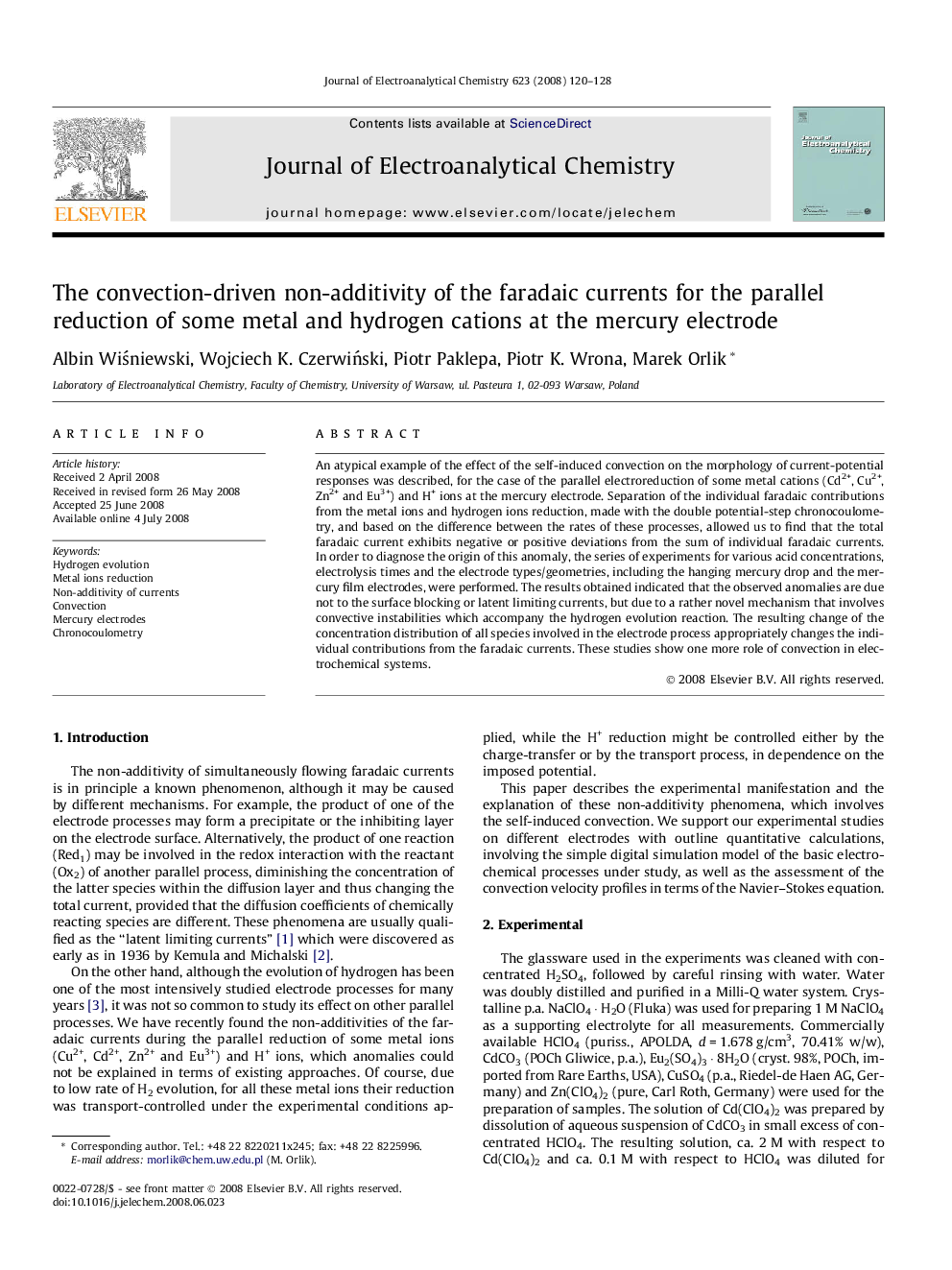| کد مقاله | کد نشریه | سال انتشار | مقاله انگلیسی | نسخه تمام متن |
|---|---|---|---|---|
| 220402 | 463330 | 2008 | 9 صفحه PDF | دانلود رایگان |

An atypical example of the effect of the self-induced convection on the morphology of current-potential responses was described, for the case of the parallel electroreduction of some metal cations (Cd2+, Cu2+, Zn2+ and Eu3+) and H+ ions at the mercury electrode. Separation of the individual faradaic contributions from the metal ions and hydrogen ions reduction, made with the double potential-step chronocoulometry, and based on the difference between the rates of these processes, allowed us to find that the total faradaic current exhibits negative or positive deviations from the sum of individual faradaic currents. In order to diagnose the origin of this anomaly, the series of experiments for various acid concentrations, electrolysis times and the electrode types/geometries, including the hanging mercury drop and the mercury film electrodes, were performed. The results obtained indicated that the observed anomalies are due not to the surface blocking or latent limiting currents, but due to a rather novel mechanism that involves convective instabilities which accompany the hydrogen evolution reaction. The resulting change of the concentration distribution of all species involved in the electrode process appropriately changes the individual contributions from the faradaic currents. These studies show one more role of convection in electrochemical systems.
Journal: Journal of Electroanalytical Chemistry - Volume 623, Issue 1, 1 November 2008, Pages 120–128